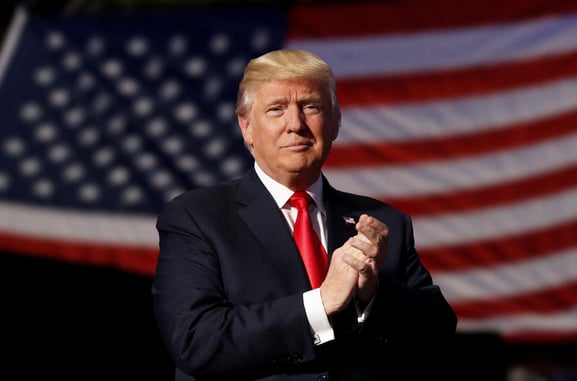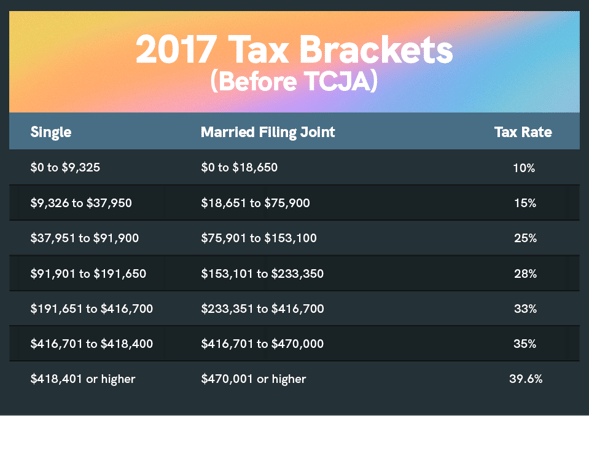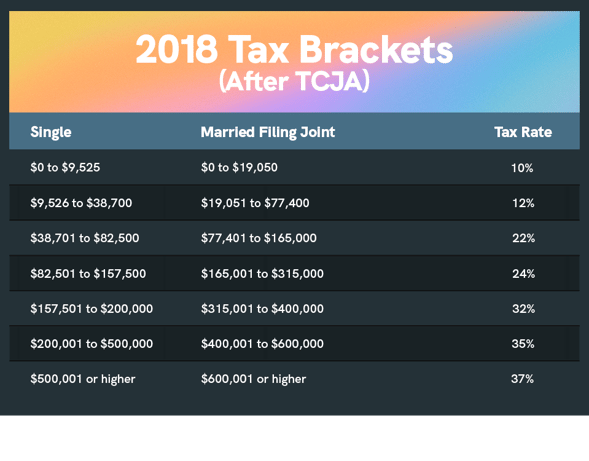
Latest Article: What is a Sovereign Wealth Fund and Why is America Creating One?
Trump's Tax Laws Explained
Learn about Trump's past and proposed future tax laws, what they mean, and who they'll impact, from the Tax Cuts and Jobs Act (TCJA) to today.
TAXECONOMYHOMEPAGE - FEATURES - ROW 2
David Kindness, CPA
11/8/2024



Trump's Tax Laws Explained
Written by David Kindness, CPA
November 7, 2024
Why you can trust Your Creative CPA
Our content is written, edited, or both by industry experts who are creative entrepreneurs just like you. Learn more.
Taxes - everyone's favorite thing! Don't you just love confusing tax laws, giving away a huge chunk of your paycheck, and hoping the IRS doesn't come after you because you made some kind of obscure mistake? Me neither.
While tax laws aren't fun, we do need to understand them - at least at a basic level - to function well financially, save money, and stay out of trouble with the IRS.
In this article, we'll explain Trump's Tax Cuts and Jobs Act (TCJA), which was passed in 2017 and went into effect in 2018, as well as his proposed future tax laws. We'll also break down specific Trump tax laws, what they mean, who they impact, and the effect they could have on the economy and on your life.
Fast Facts about Trump's Tax Plan
In 2017, Trump passed the Tax Cuts and Jobs Act (TCJA), a significant tax code overhaul that lowered taxes for low-income taxpayers, boosted the economy, and more.
Trump doubled the standard deduction starting in 2018, which immediately benefitted low- and middle-income taxpayers, saving them money on taxes every paycheck.
Trump is interested in removing taxes on tips, overtime, and Social Security income, benefitting many low to mid-income taxpayers.
Trump has floated the idea of partially or fully replacing the federal income tax with tariffs on foreign goods, a move which could have wide-reaching effects both in the US and abroad.
Tax Cuts and Jobs Act (2017 to Today)
Let's start by diving into the tax laws Trump passed back in 2017 during his first presidency - the Tax Cuts and Jobs Act (TCJA) - which overhauled a good portion of the tax code at the time. To avoid confusion, TCJA is also known as the "Trump tax code" and the "Trump tax cuts".
Reduced Federal Income Tax Rates
One of the biggest changes under TCJA was a reduction in federal income tax rates, which had an effect on essentially every tax-paying American, as well as on the US economy itself. Most people started saving money on taxes right away, which helped people save money, pay bills, and fund their retirement accounts. Let's take a look at the income tax rates in 2017 (prior to TCJA taking effect) and in 2018 (after TCJA took effect).
The above charts show that tax rates for most income brackets were reduced, saving taxpayers an average of 1.94% on their taxes. The only brackets that didn't change were the 10% rate and the 35% rate. The tax bracket income ranges were also expanded, which saves taxpayers even more because a greater portion of their income remains in a lower bracket.
Doubled the Standard Deduction
One of the most impactful tax law changes Trump implemented was doubling the standard deduction, which is a significant tax deduction used by more than 90% of taxpayers. Every low-income taxpayer claims the standard deduction every year, and a significant portion of middle-income taxpayers do as well. This single deduction saves taxpayers billions of dollars collectively every year. This move also simplified tax filing for many Americans, removing the need to think about itemizing deductions throughout the year and during tax filing season.
The standard deduction is a dollar amount that taxpayers can deduct from their gross income to reduce their taxable income, saving them money on taxes every year. It's a simplified way to account for common deductions you might incur throughout the year, such as charitable donations, medical expenses, and state and local taxes. The alternative to taking the standard deduction is to itemize your deductions, which means that you'll have to deduct more than the standard deduction amount - which most taxpayers are unable to do.
Below are the standard deductions for 2017, 2018, 2024, and 2025:
2017 Standard Deductions: $6,350 for single taxpayers and $12,700 for married filing joint taxpayers.
2018 Standard Deductions: $12,000 for single taxpayers and $24,000 for married filing joining taxpayers.
2024 Standard Deductions: $14,600 for single taxpayers and $29,200 for married filing joining taxpayers.
Projected 2025 Standard Deductions: $15,000 for single taxpayers and $30,000 for married filing joining taxpayers (note that 2025 amounts are projected and may be subject to change).
Lowered the Alternative Minimum Tax (AMT)
AMT is a separate income tax that exists alongside regular income taxes and places a lower limit on the percentage that filers must pay. It's designed to ensure that high-income earners pay federal taxes even if they take significant deductions and credits on their regular income tax returns.
AMT is a bit complicated so we'll just cover the basics for now. Taxpayers who are subject to AMT are required to pay either their regular income tax or the alternative minimum tax, whichever is higher. AMT tax rates are 26% or 28% depending on income level, and exemption levels and phaseout ranges are indexed for inflation (so they go up each year).
Trump didn't invent AMT - it's been around since 1969 when the government found that 155 people with incomes over $200,000 paid nothing in taxes - but he did increase AMT income levels and phaseout ranges. This change means that fewer high-income earners are subject to AMT, which could lower the amount of federal taxes they may be required to pay.
Increased the Estate Tax Exemption
Trump doubled the estate tax exemption, which allows individuals to avoid paying estate taxes on a portion of their estates after death. Basically, when someone dies, their money, investments, real estate, and other assets have value and can be passed down to their heirs. when you pass assets on to your kids, an estate tax has to be paid on those assets. However, due to the exemption, a significant portion of these taxes can be avoided.
Below are the 2017, 2018, and 2024 estate tax exemption amounts:
2017 Estate Tax Exemption: $5.49 million for single taxpayers and $10.98 million for married filing joint taxpayers.
2018 Estate Tax Exemption: $11.18 million for single taxpayers and $22.36 million for married filing joining taxpayers.
2024 Estate Tax Exemption: $13.61 million for single taxpayers and $27.22 million for married filing joint taxpayers.
Doubling the estate tax exemption is one of Trump's less-known and less-altruistic tax laws. Because it only helps wealthy taxpayers save money on generational taxes, it doesn't benefit the majority of lower- to middle-income taxpayers - and may even harm them by shifting a greater portion of the tax burden to them and away from estate taxes.
However, in terms of wealth creation, doubling the estate tax exemption helps new-wealth families compete with the ultra-wealthy, while still charging a significant estate tax on the majority of ultra-wealthy families' estates. This could help level the playing field amongst generationally-wealthy families and may help reduce the risk of monopolistic families holding too much power.
Trump's Proposed Tax Laws for 2025 and Onward
Now that we understand Trump's 2017 Tax Cuts and Jobs Act (TCJA), let's explore his proposed tax laws for 2025 and beyond. It's important to note that these are only proposed tax laws, and may not actually be passed into law.
No Taxes on Tips
Trump has proposed removing federal income taxes on tips for service workers, which would significantly reduce the taxes these workers pay with every paycheck, allowing them to better afford housing, food, and other necessities. This tax law is designed to benefit low-income workers by saving them money on taxes.
No Taxes on Overtime Pay
In addition to his proposal to remove taxes on tips, Trump has also indicated an interest in removing taxes on overtime pay. This would affect workers who make hourly wages and who are required to be paid overtime if they work more than 40 hours in a week. These workers are generally in the service industry, like baristas, grocery store workers, waiters/waitresses, bartenders, factory workers, cashiers, and more.
Remove Taxes on Social Security Income
Trump has also proposed removing taxes on Social Security payments, which would benefit people aged 62 and above (62 is the earliest someone can start taking Social Security). This would allow aging US citizens to save on taxes during their retirement years.
End Double Taxation of US Citizens Living Abroad
Trump has shown interest in removing double income taxation on US expats living abroad. The primary effect of this law would be to reduce the complication in preparing tax returns for expats, as they may no longer need to either claim the foreign tax credit (by filing Form 1116) or claim the Foreign Earned Income Exclusion on their US tax returns each year.
Make Interest on Car Loan Payments Tax Deductible
Trump has stated that he wants to make interest payments on car loans tax deductible if the vehicle is manufactured in the United States. It's unclear if he would do this via an above-the-line deduction or a below-the-line (itemized) deduction, which could affect the availability of this deduction. However, if this law passes, it would help people afford to purchase new or used cars more easily, and it would incentivize automakers to manufacture vehicles in the United States rather than doing so abroad.
Eliminate the $10,000 Limit on State and Local Tax Deductions
Currently, there is a $10,000 limit on state and local itemized tax deductions, which includes property taxes. Trump has said that he's planning on removing this limit, which would allow anyone who itemizes their deductions - which includes essentially every homeowner who pays property taxes and mortgage interest - to reduce their taxes by increasing their itemized deductions. Taxpayers who take the standard deduction (and do not itemize) would be ineligible for this deduction.
Lower Taxes for Corporations that Manufacture Products in the US
The tax rate for US corporations is a flat 21%. This rate was implemented by TCJA in 2017. Now, Trump has shown interest in reducing the corporate tax rate even further - from 21% to 15% - for corporations that manufacture their products domestically. This would encourage corporations to bring manufacturing back to the US by allowing them to save money on taxes. This could also have a positive effect on the economy, increasing cash flow, and could also result in corporations being able to pay workers higher wages using their extra funds.
Imposing Significant Tariffs on Imported Goods
Trump has stated that he wants to offset lower federal taxes with tariffs on imported goods from other countries, and especially from China. Tariffs are taxes that a government charges on imported goods. Tariffs must be paid by the exporting business or government, and they increase the prices of foreign goods domestically, making them less attractive to consumers. However, tariffs are also a way to generate revenue for governments, allowing them to reinvest in their economies, infrastructure, and more.
It is difficult to determine the exact impact increased tariffs will have on the US economy. One of the earliest effects will be an increase in the price of foreign goods. However, as more and more manufacturing is brought back to the US and away from foreign countries, prices could level out in the mid to long-term. Domestic manufacturing could create more jobs for US workers, give the US more economic power, and reduce reliance on foreign production.
An Important Note on Governments
First, governments are made up of people who are no better than you and me. They're just people - just like any random person you'd see walking around town. They've simply pursued positions of power as their careers and life goals. Some for the sake of power itself, others for the sake of money, and still others for the sake of doing the right thing. However, the old saying that "power corrupts, and absolute power corrupts absolutely" is still true - even those politicians who go into government to change the world eventually end up corrupted, to some degree or another, by money and power.
Second, governments don't produce anything, meaning they don't make a profit. They don't create or sell products or services like you do when you go to work every day. Profit is what allows every business, and the entire economy, to continue operating. It's what allows your investment and retirement account to grow over time. The government doesn't produce any kind of profit, so all of their resources come either from taking it, under threat of incarceration, from you and me in the form of taxes, or from printing money (AKA inflation, which is also a form of tax).




NOTE
We've analyzed both Kamala and Trump's tax laws. Click here to read the Kamala's Tax Laws article.
"Higher taxes never reduce the deficit. Governments spend whatever they take in, and then whatever they can get away with."
Milton Friedman
"For a nation to tax itself into prosperity is like a man standing in a bucket and trying to lift himself up by the handle."
Winston Churchill

Frequently Asked Questions (FAQs)
Do I need a business license to sell online?
The answer depends on your location and the specific items you sell. Some states require a business license for any online sales, while others might have exemptions for handmade crafts. It's always best to check with your local government or business licensing office to see what regulations apply to you.
Do I need an accountant to help with taxes and accounting for my business?
Creative businesses can benefit greatly from accountants, but they are not always necessary. Accountants can make preparing accounting records like income statements and balance sheets a breeze, and they can also manage your tax filing when tax time comes around.
They can help ensure your finances are organized, deductions maximized, and tax laws followed correctly, saving you money and giving you peace of mind. However, you can absolutely prepare your accounting records and tax forms without the use of an accountant. This may require a little more time and effort on your part, but it'll save you money and give you significant insight into your business.
How do I choose a business name?
Pick a name that is catchy, memorable, and reflects your brand identity. Make sure it's future-proof, and make sure the domain name and social media handles associated with your chosen name are available. You can also check with your state's business licensing office to ensure the name isn't already trademarked. If it is, you can add a prefix or suffix, like "company", "art", or "clothing".
Do I need a lawyer to start a business?
For smaller businesses, or those seeking a less complex legal structure, you generally do not need to consult with a lawyer when starting your business. However, speaking with a lawyer can be helpful, especially when choosing a more complex business structure or if you have specific legal questions. There are also many online resources and legal templates available to help you get started without using expensive legal services.
Can I contribute to both a Traditional IRA and a Roth IRA
Yes, you can contribute to both a Traditional IRA and a Roth IRA, but there are overall contribution limits across both accounts. The contribution limit is $7,000 for 2024 ($8,000 for those 50 or older). Your income may also affect your eligibility to contribute to a Roth IRA.
How much does it cost to start a small business?
Starting your creative business can be inexpensive or even free. A domain name (like www.domain.com) can cost as low as $0.99 for the first year, then $10-$20 per year after that. A web hosting platform (like Hostinger or Squarespace) can cost around $40-$50 for the first year, then around $150 per year after. Filing your business with your state or city generally costs $50 or less. In many cases, the only other thing you need is supplies to create your art and stamps to send your art to clients and customers.
Disclaimer: the information provided in this article is for educational purposes only and does not constitute tax, accounting, investing, legal, or financial advice. The information in this article does not take into account your unique financial or business situation or goals, and YCCPA cannot be responsible for reader's financial decision-making. YCCPA's goal is to educate and support you on your creative business journey.
Written by David Kindness, CPA
David is a CPA (Certified Public Accountant) and professional photographer, videographer, and designer based in San Diego, California. Learn more.




supported by ads
Your Creative CPA is supported by the ads you see in our articles and guides.
These ads help us help creatives like you.

financial wisdom for creatives, by creatives
Created by David Kindness
Copyright 2025 Terms






